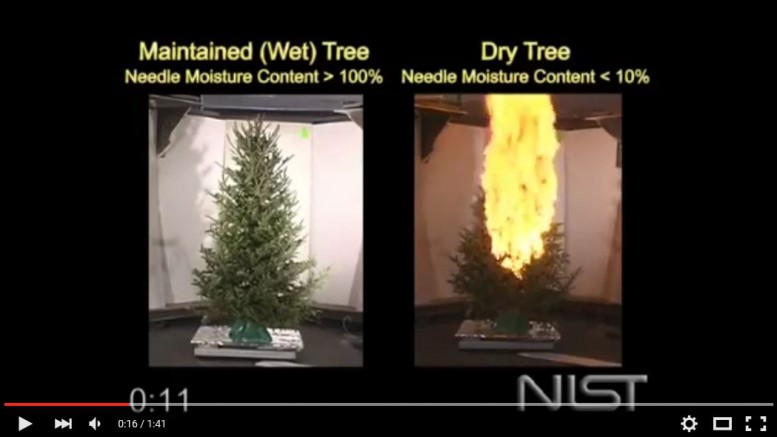Fire Safety for the Holidays
The National Fire Protection Association (NFPA) reports that there is an estimated annual average of 210 home structure fires that begin with Christmas trees. Based on data from 2002 through 2005, these fires caused an average of 24 civilian deaths, 27 civilian injuries, and $13.3 million in direct property damage per year. The NFPA analysis also shows that although the number of Christmas tree fires is low, these fires represent a higher level of hazard. On average, 1 of every 9 Christmas tree fires resulted in a fatality compared to an average of one death per 75 non-confined home structure fires overall. Further, 49 % of Christmas tree fires spread beyond the room of origin. The fires that spread beyond the room of origin caused 94 % of the associated fatalities.
The percentage of trees involved in structure fires represent an extremely small portion of the total number of natural Christmas trees sold, which is estimated at 30 million trees, in the United States each year. The moisture content of each tree can play a dominant role in determining the fire hazard each tree represents.
Properly maintaining a cut Christmas tree is important to retaining a high moisture content in the needles of the tree to limit accidental ignition and prevent rapid flame spread. A tree which has dry needles can readily ignite with a flaming source and generate heat release rates that are capable of causing flashover in residential scale rooms.
Wet trees tell a different story.
For comparative purposes, the NIST researchers selected a green Scotch pine, had it cut in their presence, had an additional two inches cut from the trunk’s bottom, and placed the tree in a stand with at least a 7.6 liter water capacity. The researchers maintained the Scotch pine’s water on a daily basis. A single match could not ignite the tree. A second attempt in which an electric current ignited an entire matchbook failed to fire the tree. Finally they applied an open flame to the tree using a propane torch. The branches ignited briefly, but self-extinguished when the researchers removed the torch from the branches. Trees that have been watered properly, and maintain pliable, green needles are harder to ignite than dry trees with needles that break easily when bent and fall from the tree when the branches are shaken.
All you have to do is watch the videos to see the incredible difference that keeping your live Christmas tree watered can make in preventing a fire. Water your Christmas trees for safety sake!!


Be the first to comment on "Water Your Live Christmas Trees for Safety Sake!!"